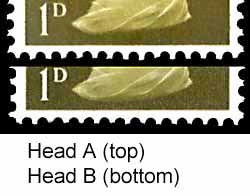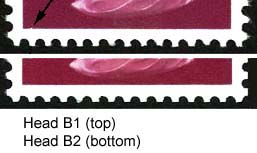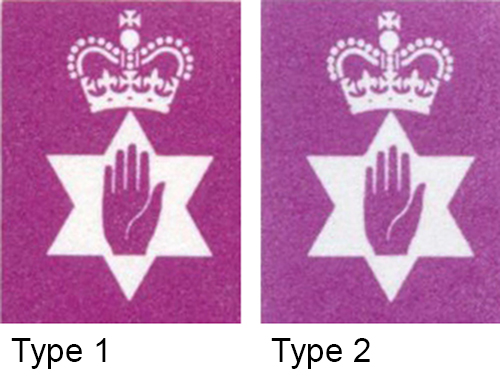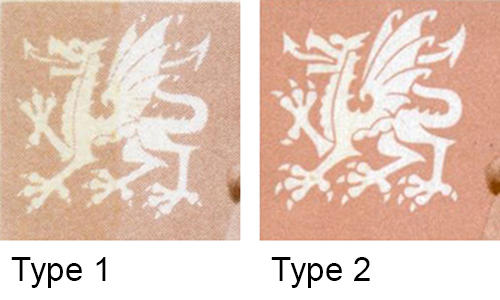Machin Head and Symbol Types
Various Head types (referring to the portrait of the Queen) have been required over the years. This is due in part to the different printing methods employed and the amount of room available on the stamp to print the image (due to regional symbols, value size, etc.).
A few stamps do exist with more than one head type. The differences can be subtle. The discussions here are limited to those stamps that require Head-type identification.
These descriptions are summarized from The Complete Deegam Machin Handbook (simply the best Machin handbook available anywhere), © D.G.A. Myall - click for details.
| Head A | base of bust is "flat" |

|
| Head B | base of bust is "rounded" | |
Stamps that exist with both Head A and Head B:
|
| Head B1 | the 6th dot from the lower left corner is missing |  |
| Head B2 | the dot is present (i.e. no break) |
|
Stamps that exist with both Head B1 and Head B2:
|
Northern Ireland | Scotland | Wales
This refers to the symbol found in the upper left corner of Regional Machins.
Three of the four countries have a few stamps that exist with two different symbol types (only the Isle of Man does not have symbol types).
A magnifying glass may be required to spot the subtle differences in the symbol types.
These descriptions are taken from The Complete Deegam Machin Handbook (simply the best Machin handbook available anywhere), © D.G.A. Myall - click for details.
For even more varieties on Machin stamps, check out The Complete Deegam Machin Handbook
(simply the best Machin
handbook available anywhere) by Douglas Myall -
click for details.
Booklet pane numbers used courtesy the
Modern British Philatelic Circle
who publish 'The Bookmark' Catalogue
![]()
© 1996-2023, 2024 Robin Harris
Adminware is a trademark of Adminware Corporation.


